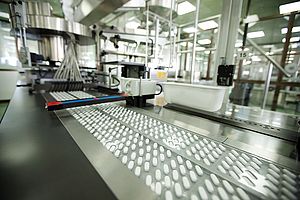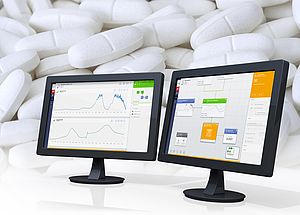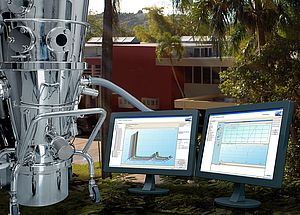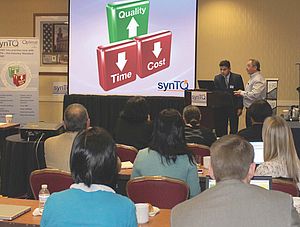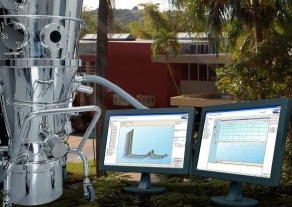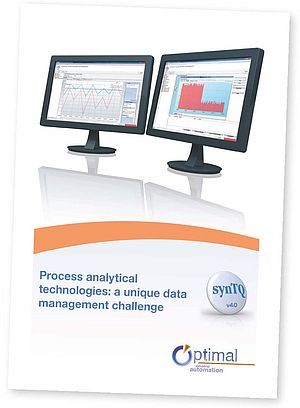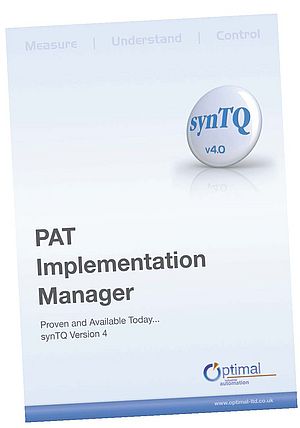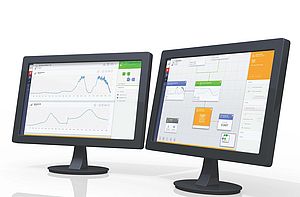With Industry 4.0 quickly becoming an established reality, (bio)pharmaceutical R&D, manufacturing and quality control facilities are implementing novel sensors and analysers that generate complex data. During each digital journey, it is equally significant for companies to set up a suitable framework to derive meaningful insights from data. A state-of-the-art Process Analytical Technology (PAT) knowledge management platform can form a strong backbone and support the digitalisation of (bio)pharmaceutical companies.
It is impossible to negate the leading role of data in driving the competitiveness of manufacturers and opening the door to the future of highly optimised production. In line with this, it is no surprise that complex in- and on-line analysers, such as Raman and near-infrared (NIR) spectrometers, are populating the facilities of even the most conservative and cautious (bio)pharmaceutical companies. Such technologies enable the real-time measurement of many Critical Quality Attributes (CQAs) that were previously only accessible offline and with a significant time delay.
By supporting the proliferation of data sources, companies can develop an in-depth understanding of their processes and what defines their performance as well as how to optimise productivity, efficiency and quality. It is therefore possible to obtain value-adding knowledge, proactively make decisions and act on this intelligence. If suitable, it is also possible to automate tasks and operations, creating integrated, intelligent systems.
With disparate analysers generating large volumes of data in real time, and the necessity of maintaining multiple chemometric models to convert this raw data into CQAs, it is crucial for companies to have a plan on what to do with them. Typically, this involves optimising the collected data and models to achieve the quality-centric control of Critical Process Parameters (CPPs). As processing, fusion and analysis are key to unlocking the opportunities of Industry 4.0 and the digitalisation transformation, industry players in the (bio)pharmaceutical industry should set up a solid framework to effectively handle data and control processes based on quality goals.
Crossing paths
A useful tool for supporting this is a PAT knowledge management system, which has long been used to support quality control and quality assurance activities. While PAT finds its origin in Quality by Design (QbD) principles, well before the rise of the fourth industrial revolution, it is well aligned with data-centric Industry 4.0 principles. The similarities are easy to identify, when considering that the focus of PAT is on designing, analysing and controlling manufacturing processes through the timely measurement of CQAs to effectively control CPPs for optimum results.
Since its establishment and first implementations, PAT has required a data management infrastructure, namely a PAT knowledge manager, to acquire, store, process and analyse data from key sources. In addition, this has been helping (bio)pharmaceutical manufacturers visualise the actionable insights generated for monitoring, intervention and auditing purposes.
With the latest advances in sensing and detection systems as well as digital technology, future-oriented PAT knowledge management systems have evolved, adopting many of the opportunities and applications offered by Industry 4.0. A notable example is represented in the increasingly accurate determination of how CPPs can influence CQAs through sophisticated predictive models, which may be able to leverage artificial intelligence (AI) and similar technologies.
Additional elements include Cloud connectivity and the ability to interact with a broader range of devices and instrumentation to implement highly mechanised processes, such as automated, quality-centric feedback and feedforward control.
A state-of-the-art PAT knowledge management platform can therefore do more than support quality control and quality assurance strategies. It forms a hub that runs data-driven operations and delivers high visibility. As a result, it sets the foundation for flexible, responsive and highly efficient processes. Ultimately, it can enable the digitalisation of (bio)pharmaceutical facilities, from Smart R&D laboratories all the way to commercial-scale manufacturing plants and clusters of factories.
These features are turning well-designed PAT knowledge management solutions into essential elements of industrial automation projects, just like controllers, robots, MES, ERP and HMIs. Clearly illustrating this trend is synTQ, a market-leading, award-winning software that is helping players across the entire (bio)pharmaceutical value chain benefit from a scalable environment for Big Data analytics for innovative Industrial Internet of Things (IIoT) applications. Adopted by over 60% of global pharmaceutical majors, synTQ is strengthening their competitiveness and continuous improvement by increasing transparency, efficiency, responsiveness in labs and shop floors.




